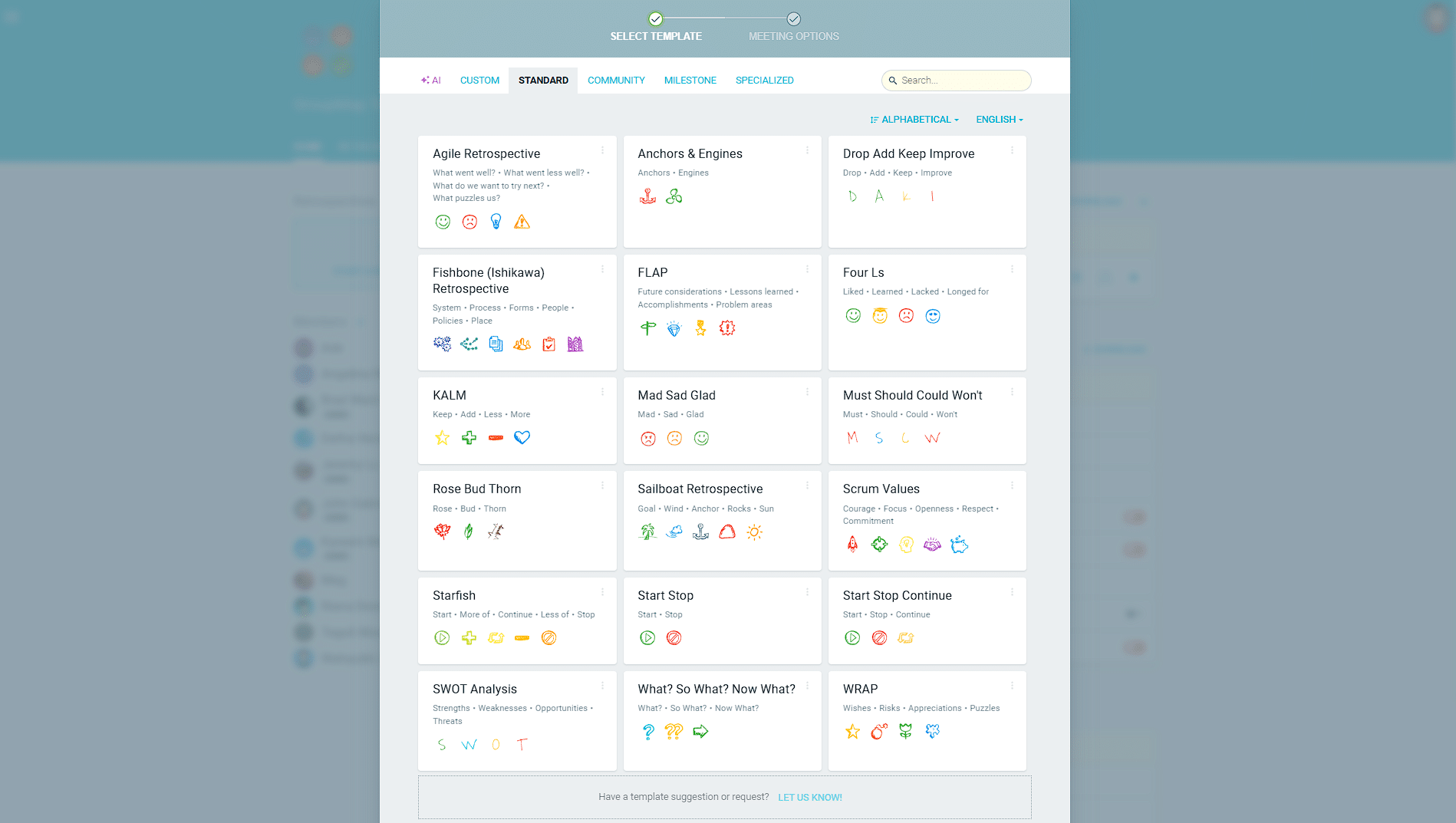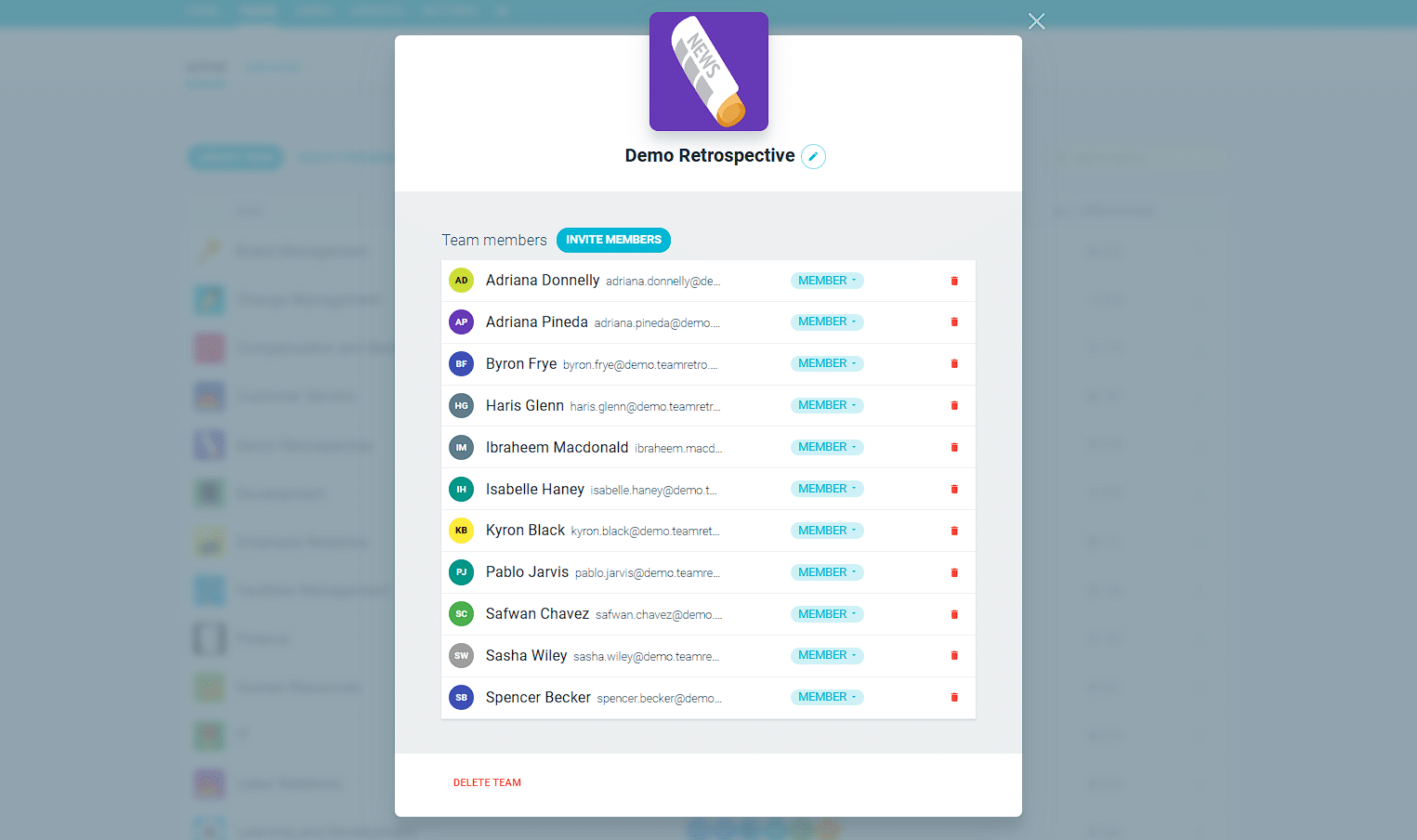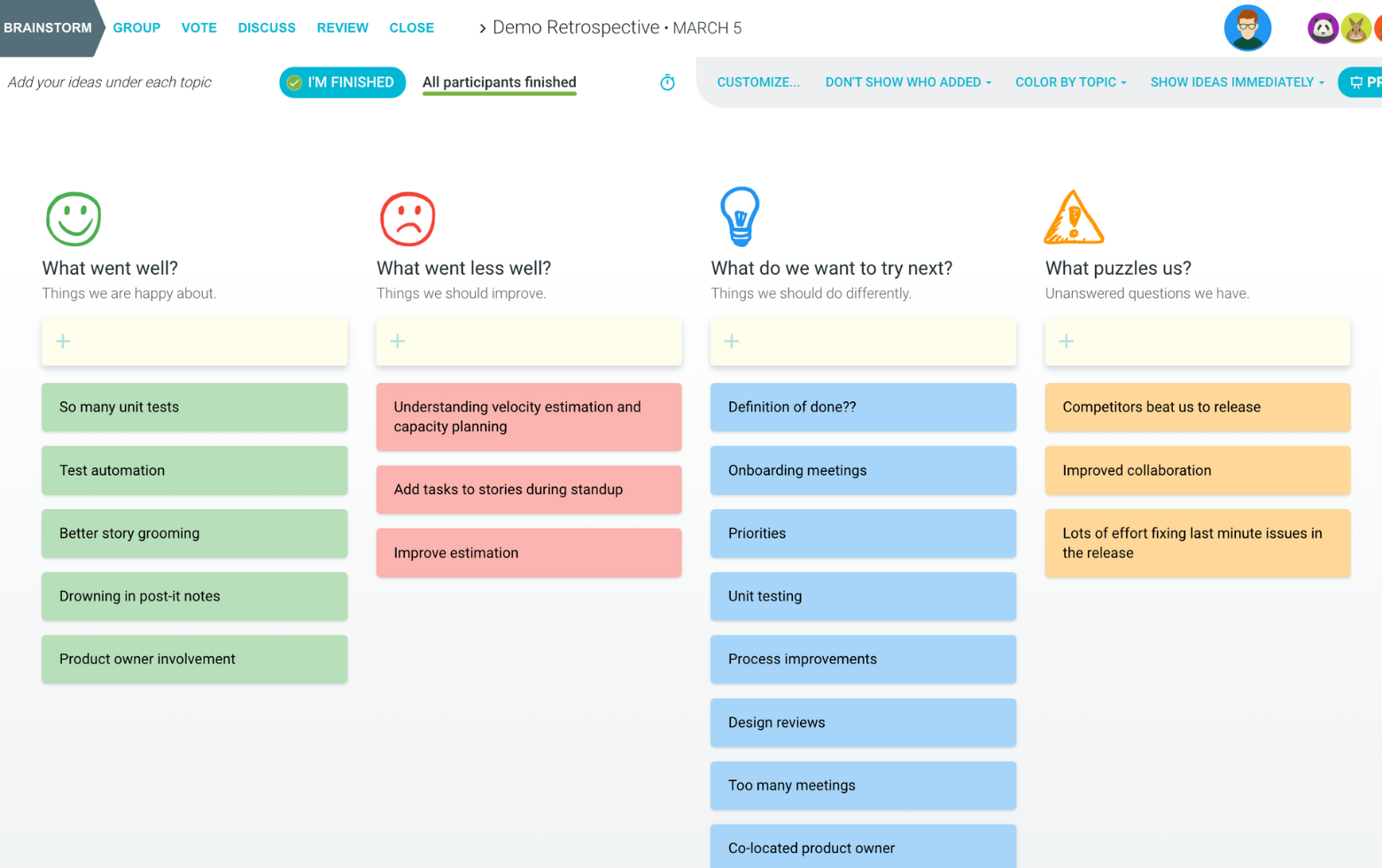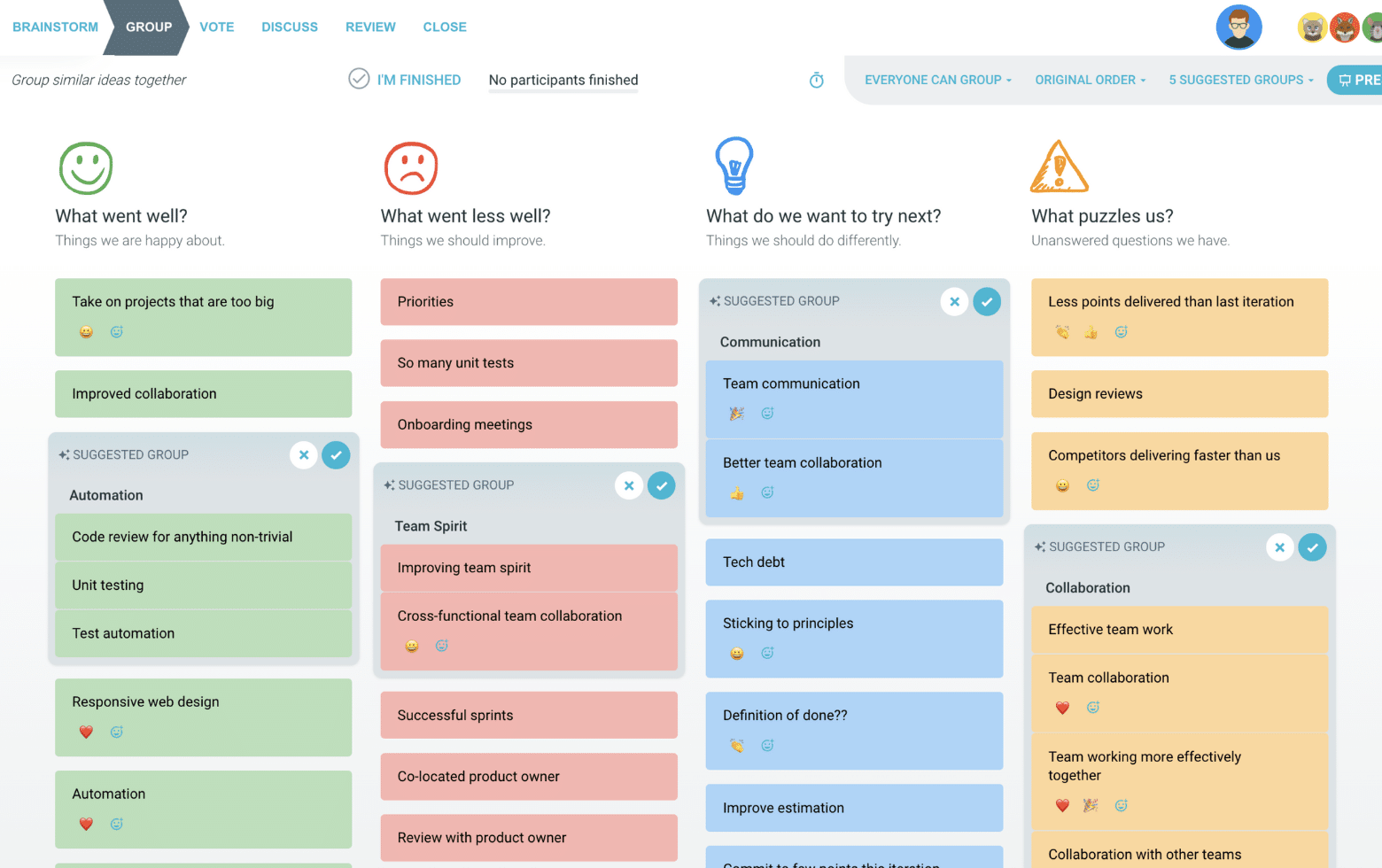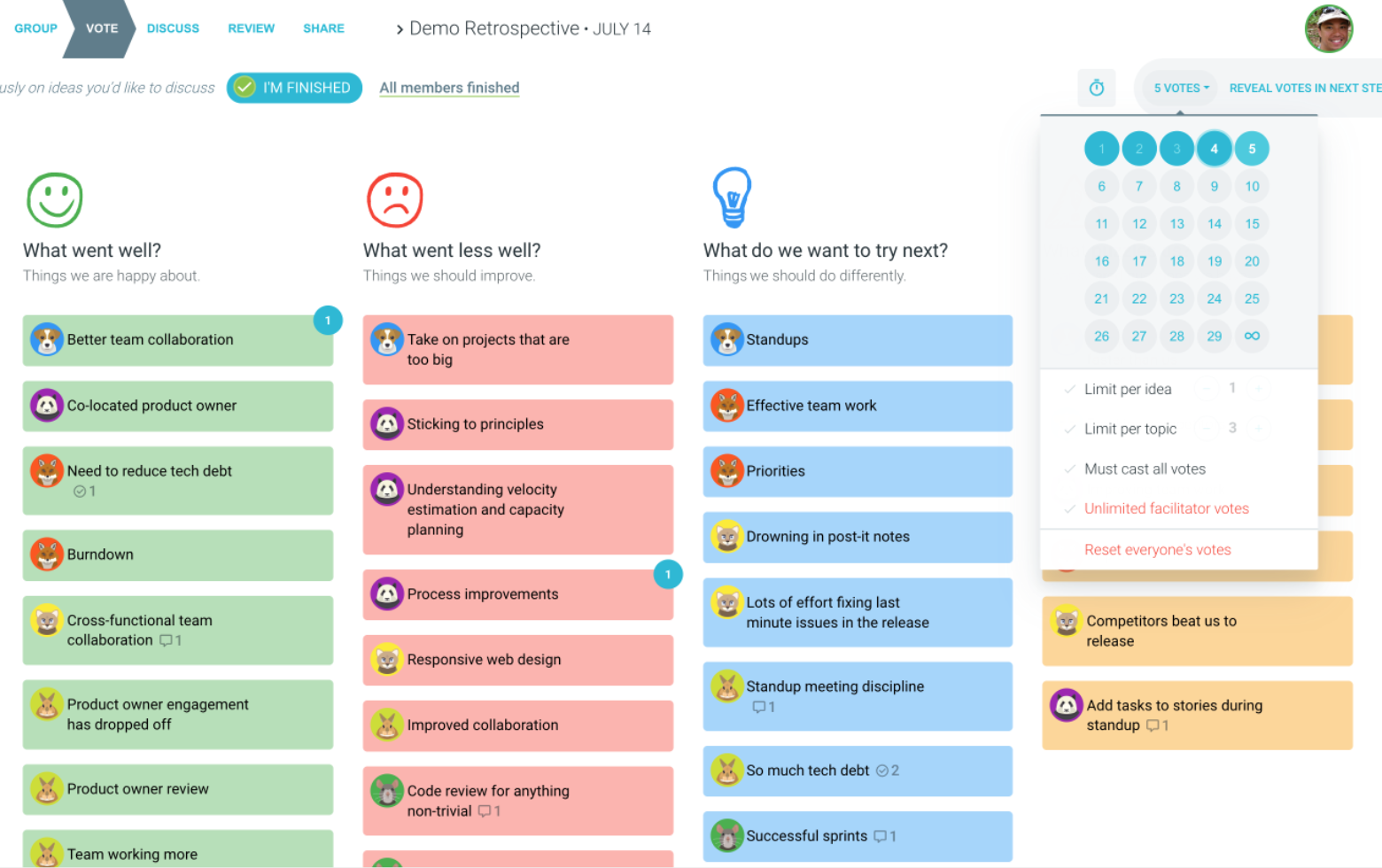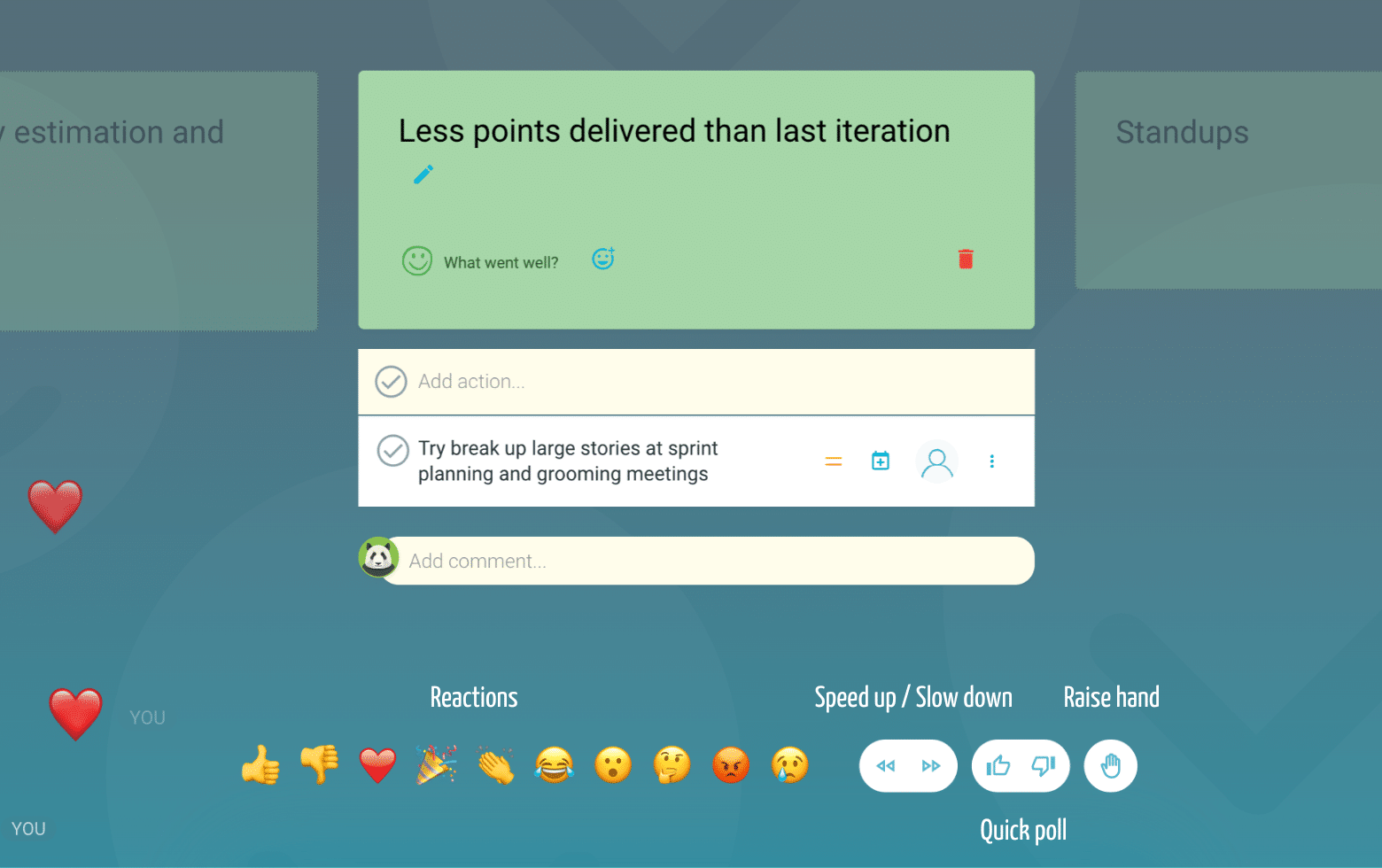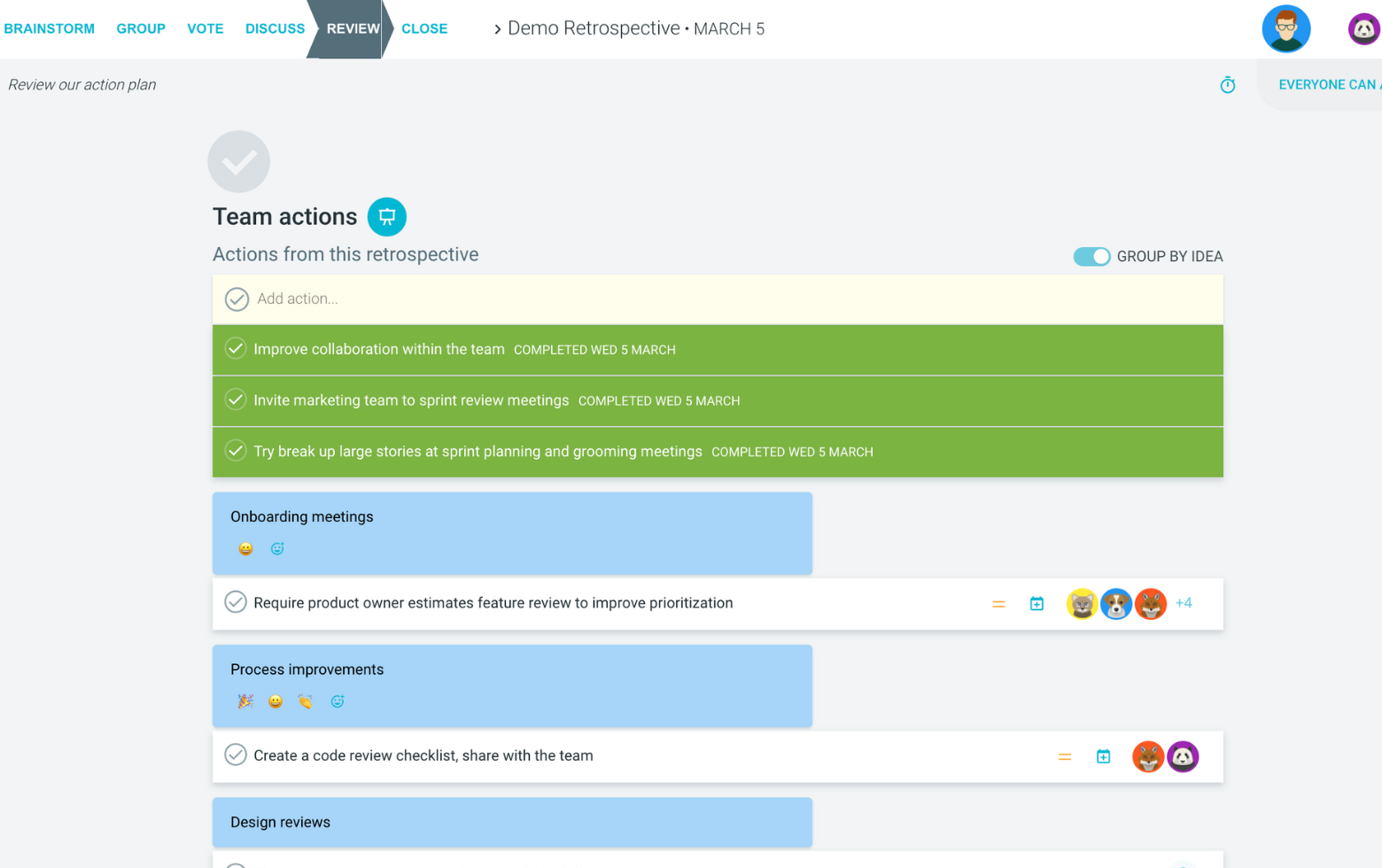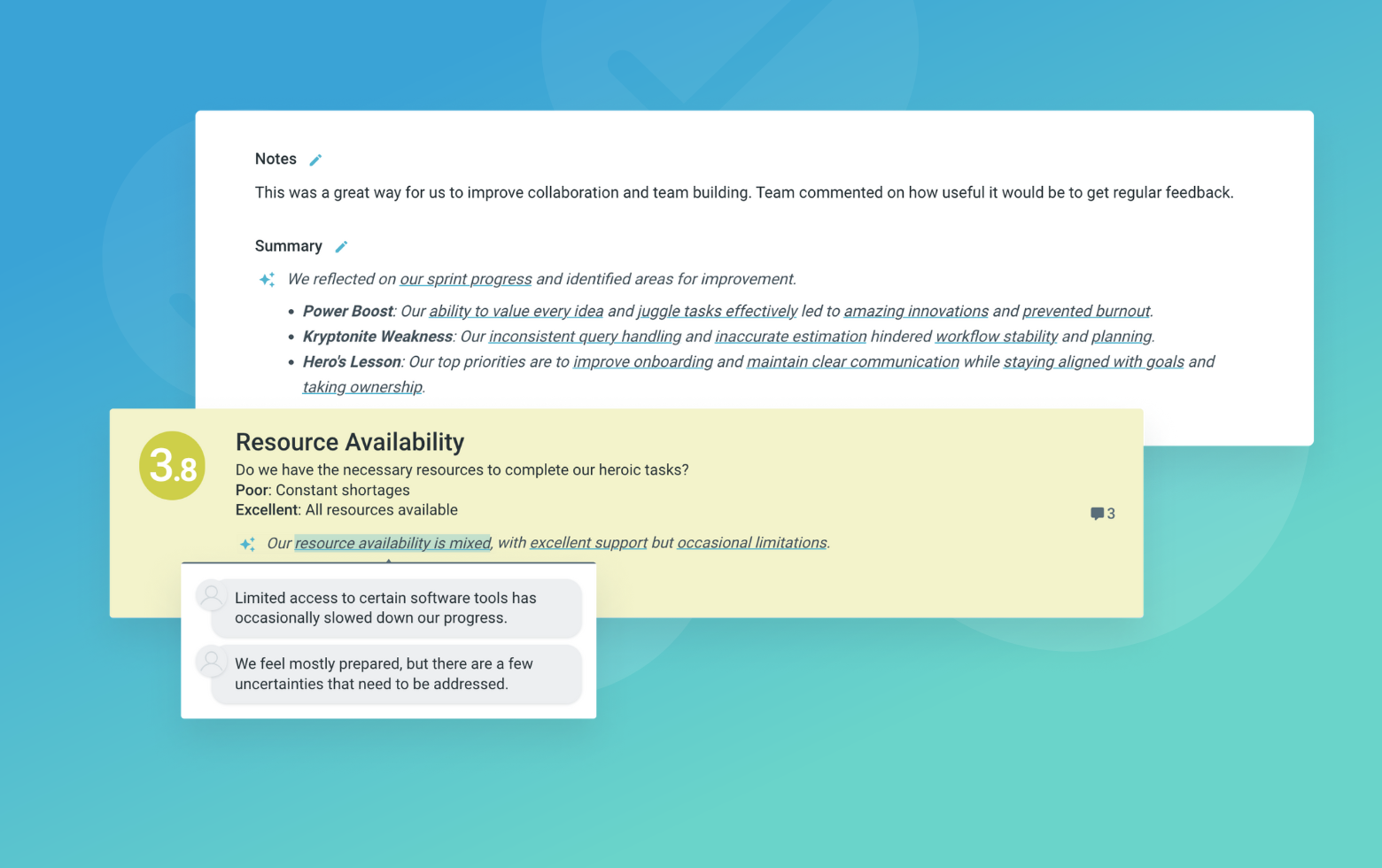The Product Development Process retrospective is a comprehensive review of an organization's end-to-end product development lifecycle. It provides a structured approach to analyze the current processes, identify areas for improvement, and implement changes to enhance efficiency and product quality.
This retrospective goes beyond the typical sprint or iteration review, focusing on the overarching product development methodology. It examines key aspects such as requirements gathering, design, development, testing, deployment, and post-release activities.
By conducting this retrospective, teams can uncover bottlenecks, streamline workflows, and foster a culture of continuous improvement. It promotes cross-functional collaboration, aligns stakeholders, and ensures that the product development process remains agile and adaptable to changing market demands.
What is The Product Development Process
Process Alignment
How well does our current process align with our product vision and goals?
Encourage participants to reflect on the overall product strategy and whether the development process supports achieving those objectives.
Process Efficiency
What bottlenecks or inefficiencies exist in our current process?
Encourage participants to identify specific pain points or areas where the process could be streamlined.
Cross-Functional Collaboration
How effectively do teams collaborate across functions and disciplines?
Encourage participants to reflect on the level of cross-functional collaboration and how it impacts the development process.
Data-Driven Decisions
How effectively do we leverage data and metrics to inform our process?
Encourage participants to discuss the use of data and metrics in driving process improvements and decision-making.
Innovation and Growth
How well does our process foster innovation and continuous improvement?
Encourage participants to discuss how the current process supports or hinders innovation and growth.
Suggested icebreaker questions
- If our product development process were an animal, what animal would it be and why?
- Share a funny or memorable experience from your time working on product development.
Ideas and tips for your retrospective meeting
- Encourage open and honest feedback from all participants, regardless of their role or seniority.
- Ensure representation from all teams and functions involved in the product development process.
- Set the tone by helping the team examine the forest from the trees. That is, consider things at a high level, rather than just the last sprint.
- Foster a blame-free environment where participants can openly discuss challenges and failures.
- Prioritize actionable insights and create a clear plan for implementing process improvements.
- Use the propose ideas features for team members to suggest changes, and get buy-in from the team before committing an action.
.
How to run effective meetings with TeamRetro
Start Your Session in a Click
Log into TeamRetro and choose your template. Customise questions and the workflow to create your perfect retro for your team.
Create Your Team Easily – No Separate Accounts Needed
Brainstorm Individually – Free From Bias
Smart Grouping for Faster Insights
Fair, Flexible, and Fast Voting
Engage, React, and Capture Key Insights
Walk your team through ideas one by one with Presentation Mode. Stay in sync, spark real-time discussions, and capture feedback with comments, live reactions, and polls—all in one place.
Turn Ideas Into Action
Propose next steps with team buy-in, get AI-powered action suggestions, and keep everything in one place. Committed actions sync to your personal dashboard and integrate with your workflow tools—keeping you on track.
Save, Share, and Stay on Track
Get quick AI-powered summaries, add facilitator notes, and store retrospectives in your library for easy access. Schedule your next session and track published actions to keep your team accountable at the next retro.
Turn Team Data into Actionable Insights
Uncover trends, common themes, and key engagement metrics at a glance. Track sentiment shifts, analyze conversations, and monitor completed actions to drive continuous improvement.
